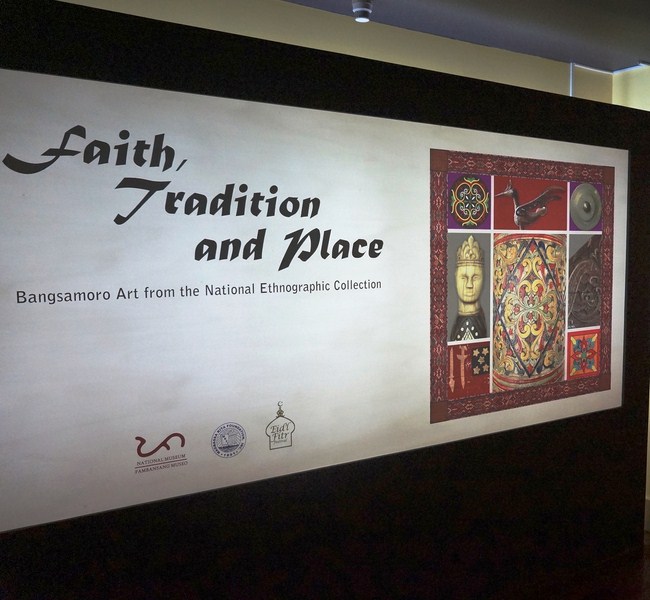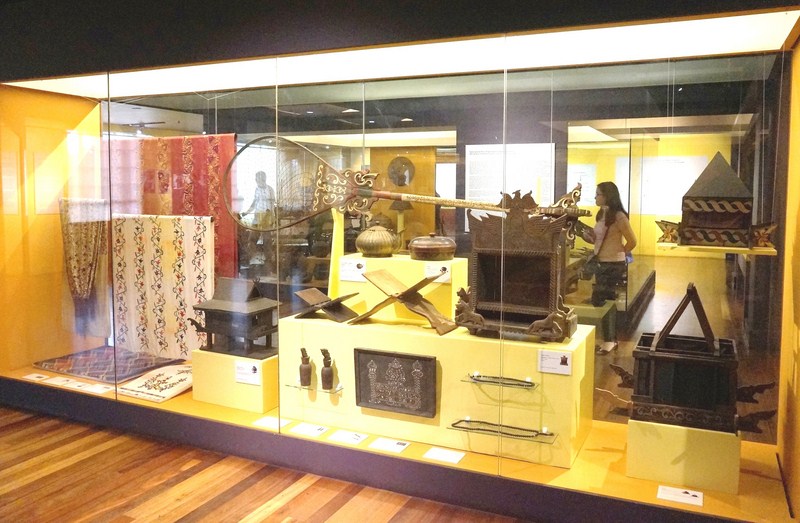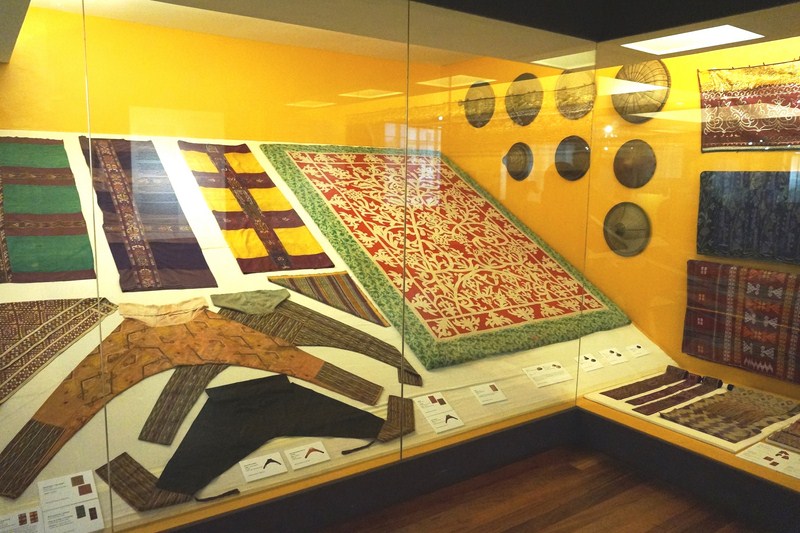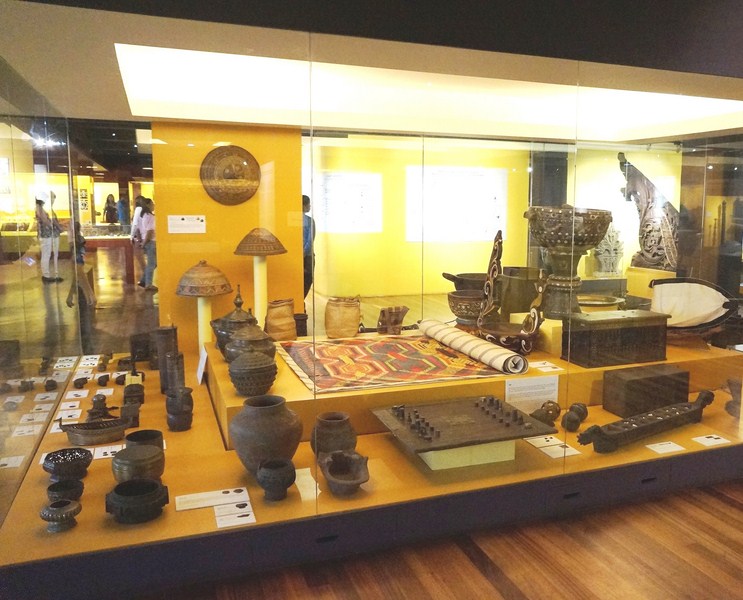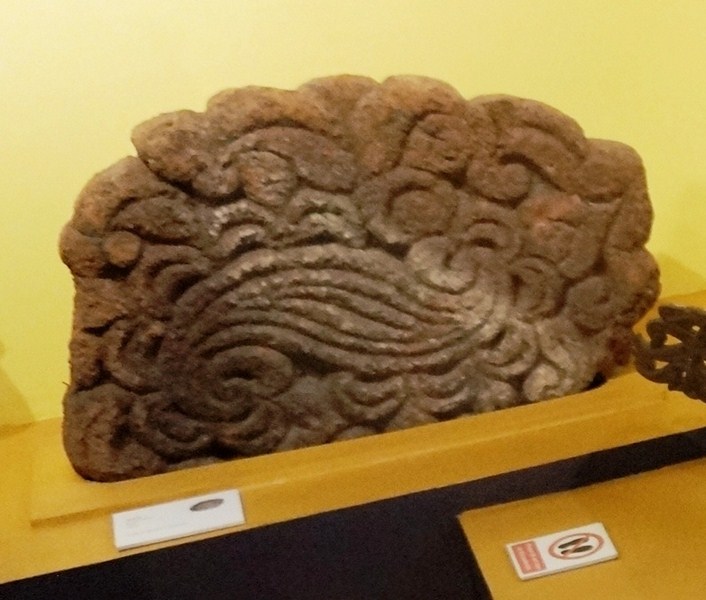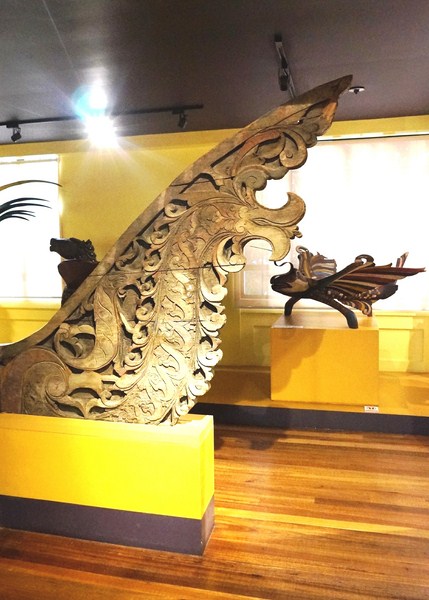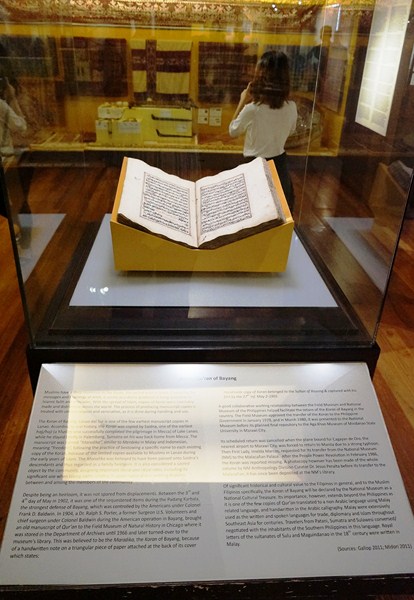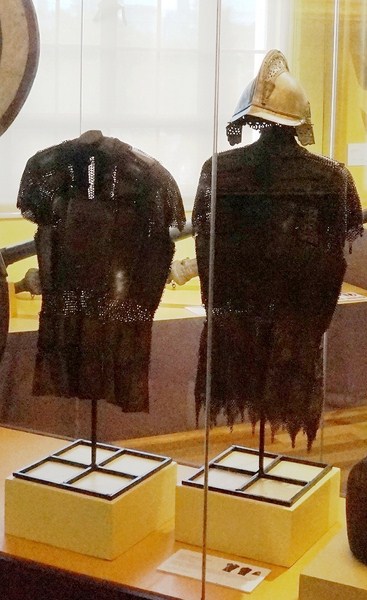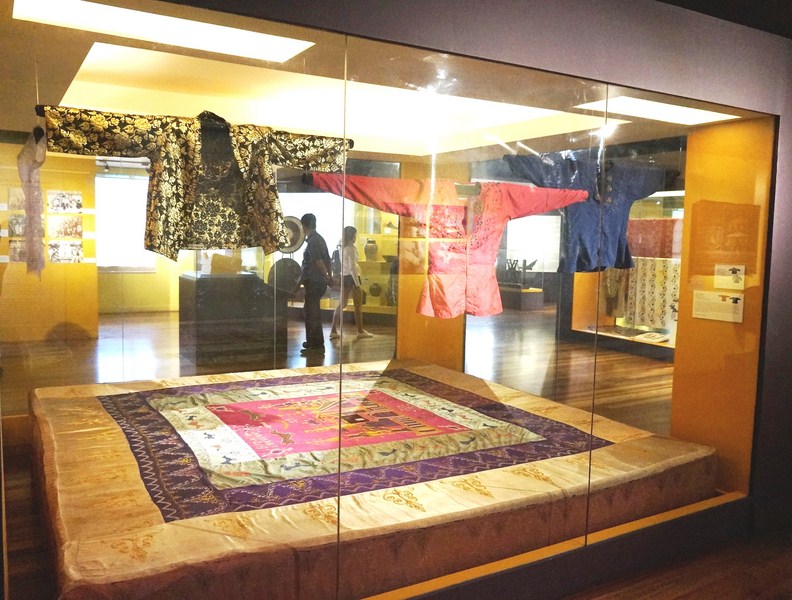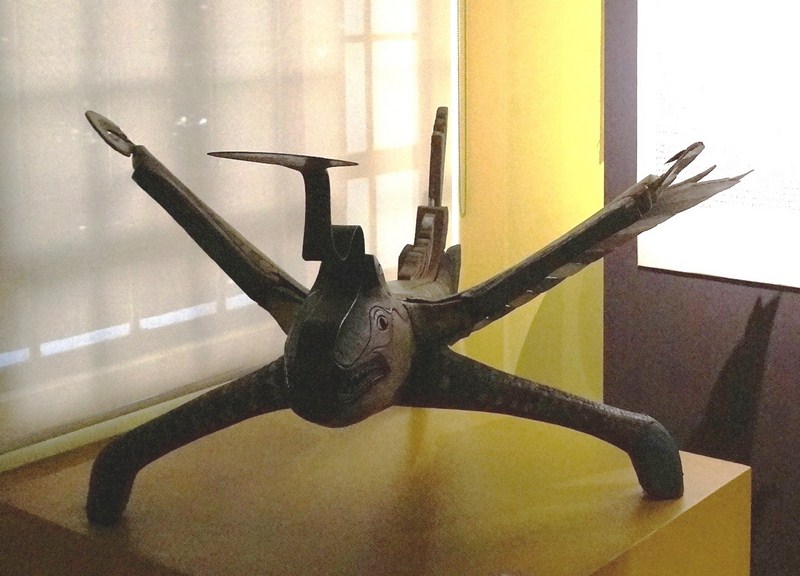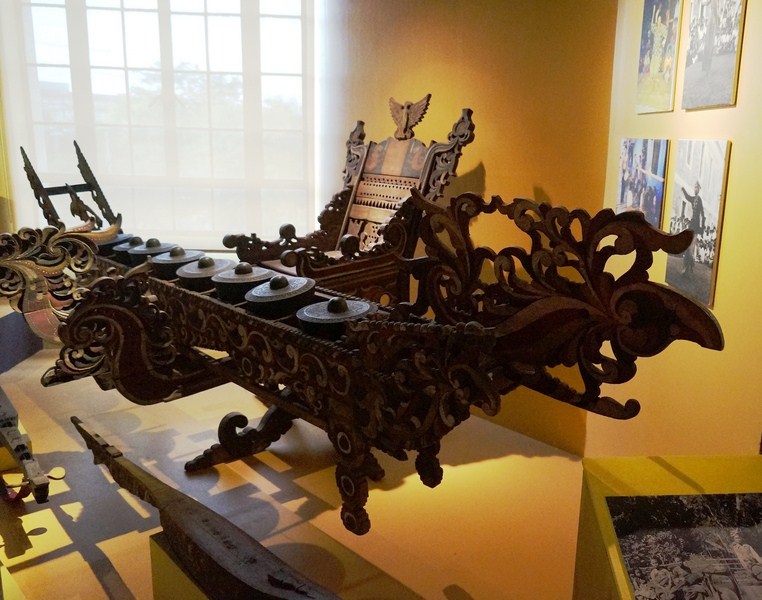The “Faith, Tradition and Place: Bangsamoro Art from the National Ethnographic Collection” Exhibit, opened last October 2014 in collaboration with the Magbassa Kita Foundation Inc., as part of the Eid’l Adha celebration, is a permanent exhibition on the rich material cultural heritage of the Islamic cultures in Mindanao, Southern Philippines.
Check out “National Museum of Anthropology”
A feast for my eyes, this region known for their ornate decorations and embellishments that are not only manifested in objects regarded meaningful or significant within various social, economic, political, or ritual contexts, but are also remarkably evident in the mundane and utilitarian.
The museum’s fourth permanent exhibit, on view at this exhibit are 251 objects, from the museum’s National Ethnographic Collection, whose particular technological and artistic elements not only express indigenous traditions but also manifest cultural connections and influences among these ethnically diverse groups especially in relation to the Islamic and Southeast Asian cultural traditions.
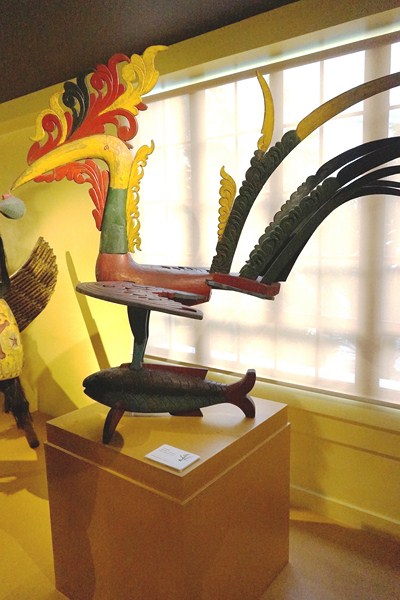
The sarimanok is an example of the carving tradition called okir/ukkil, which refers to a particular curvilinear design pattern predominantly and distinctly used by the Muslim groups in southern Philippines. This pattern specifically consists of a combination of stylized scrolls, plant-like design such as leaves, vines and ferns, bird-like designs, naga (serpent/dragon) designs and various geometric shapes.
These objects are emphasized as part of feasts, playing valuable and varied roles among Bangsamoro culture, including creating and keeping social identities and memories, as well as developing, consolidating and negotiating political power.
Through the visual exploration of the material culture of the region, this exhibition examines the cultural interactions of the Bangsamoro cultures which, though bound together by their common adherence to the Islamic faith, still maintain their distinct ethnic cultures and identities.
Exchange systems, such as gifts, barter and trade are, moreover, meant to be articulated by the exhibition. Also featured here are complex relationships accentuated by the festivals, accomplishing work, developing prestige technologies, fostering artistic traditions and providing connections to the supernatural as well as to the ancestral world.
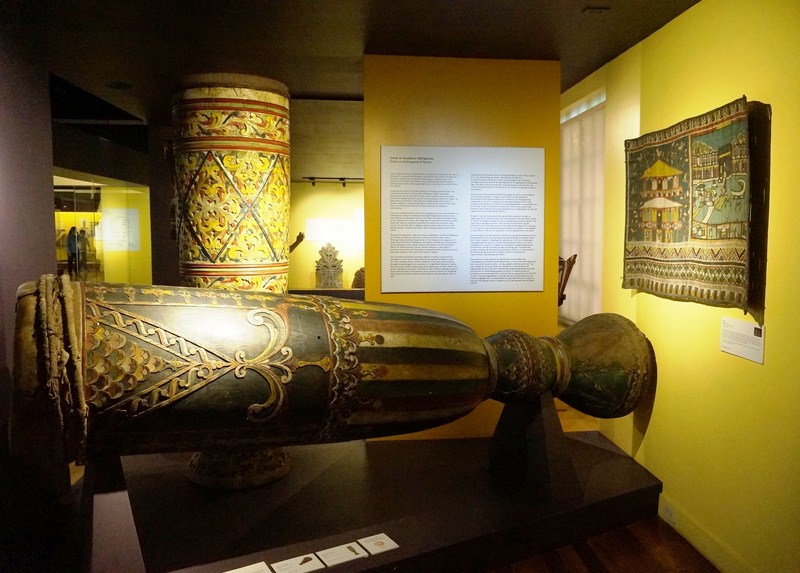
The tabo (drum) is a signaling instrument horizontally suspended in front of mosques. A standard rhythm calls people to prayer on Fridays, while a more intricate tempo is played during Ramadan
The star of the exhibit is the Koran of Bayang, a copy of the Koran supposedly handwritten in the mid-19th century. Said to have been originally owned by the Bayang family of Lanao del Sur, it was was copied by Saidna, a hajj from Lake Lanao while on a respite in Palembang, Sumatra, after his pilgrimage to Mecca. In 1902, US soldiers allegedly seized the copy and brought it to America where it was turned over to the Field Museum of Natural History in Chicago.
The copy was stored in the Department of Archives until 1966. In 1979, it was returned to the Philippines and was supposed to be delivered to the Mindanao State University in Marawi City a year later, but a typhoon forced a change of plans. Meanwhile, then First Lady Imelda Marcos reportedly took an interest in the copy and it was transferred to Malacañang. The book was “feared lost” after the 1986 Edsa uprising but Barns said the Presidential Museum eventually “made it available for public display.”
Also on display are a rarub-a-kulong (armor) and kulong sa ulo (helmet) of brass and carabao horn used by ancient Maranao warriors; a wall ornament depicting the heroic mythical character Prince Indarapatra; a wooden winged horse (on loan from the Henry W. Fernandez collection) which boasts of ornate and curvy engraved details; swords (kris) and a kinupud, a canopy of silk and cotton used by Maranao royalty to cover their beds.
A boraq, a winged creature with hair and fur details made of abaca, was carved by Maranao craftsmen from Lanao del Sur.
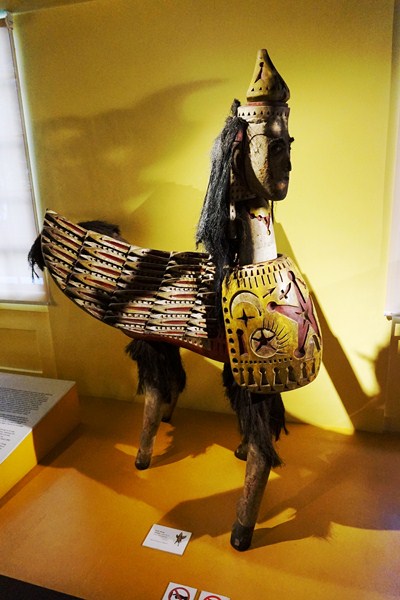
A Maranao borak/buraq made of carved wood or a combination of wood and ivory, embellished with multi-colored paint, inlaid with mother-of-pearl, or decorated with brass plates/sheets, bells and hair. As told in the Islam miʿrāj or the ascension of the Prophet Muhammad into heaven, the winged borak, half-human and half-horse, carried him in his journey from the sacred place of worship Mecca to Jerusalem then to heaven which explains how he completed travelling between the cities in a single night. The borak is also described as a white animal, half-mule or half-donkey, with wings on its sides which replaced the ladder as Muhammad’s means of access into heaven. While there is no reference as to the sex and human qualities of the borak in hadith or record of traditions or sayings of the Prophet Muhammad, the Maranao sometimes portrays it with a face of a woman.
A colorful, wood and metal Maranao kokora could be mistaken for a four-legged creature or a life-size action figure. Note that the creature looks up to a contraption attached to its head that is actually a coconut grater. Those who grate coconuts have to literally ride the kokora to do the job.
A sataran, a Maranao chess set of wood and silver, is bordered by an intricate design carved from mother-of-pearl, while an elaborately-carved, throne-like wooden korsi, where a kulintang (8 gongs laid horizontally on a stand) player sits while entertaining royalty, has a sarimanok at front and center. A tabo, a signaling instrument, is horizontally suspended in front of mosques.
“Faith, Tradition and Place: Bangsamoro Art from the National Ethnographic Collection” Exhibit: 3/F, National Museum of Anthropology, Agrifina Circle (or Teodoro Valencia Circle, adjacent to the National Museum of Fine Arts building),Padre Burgos Drive, Rizal Park, Ermita, Manila. Tel: (02) 8528-4912 (02) 8527-1232 (Ethnology Division) and (02) 8527-0278. E-mail: nationalmuseumph@gmail.com and nationalmuseumph.anthropology@gmail.com. Open Tuesdays to Sundays, 10 AM – 5 PM. Admission is free.

